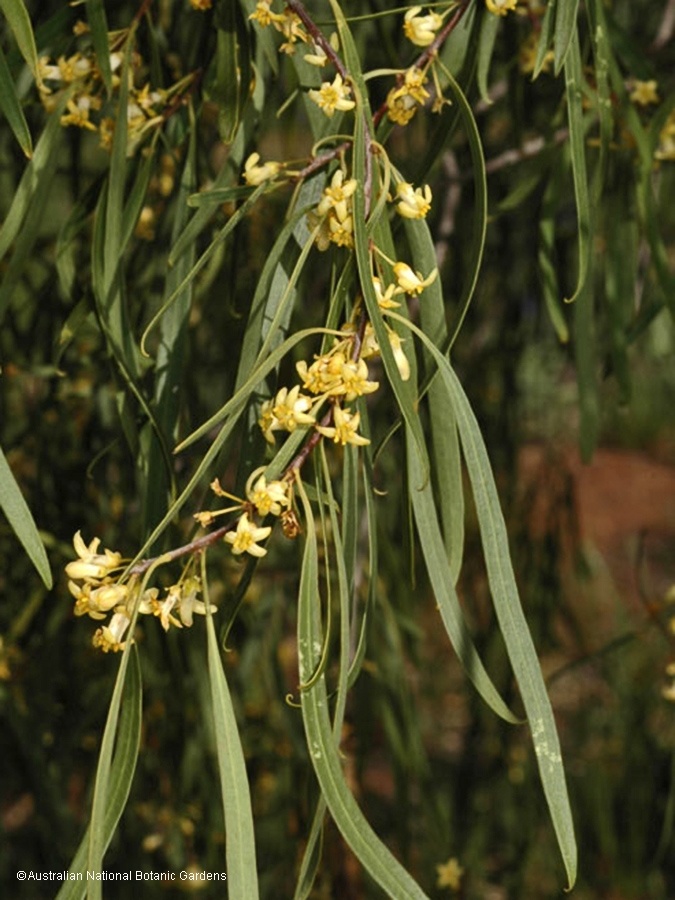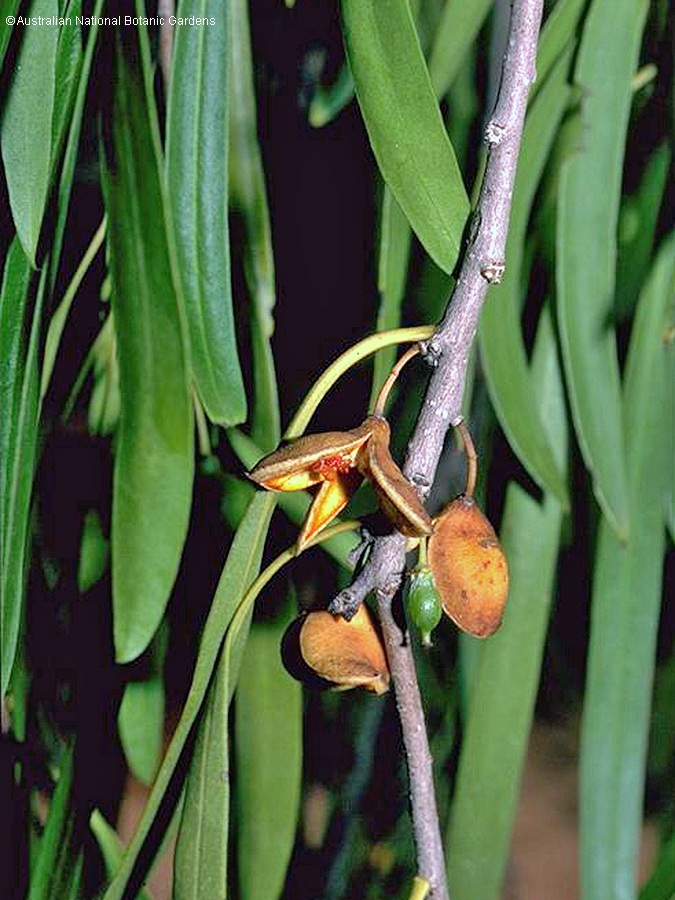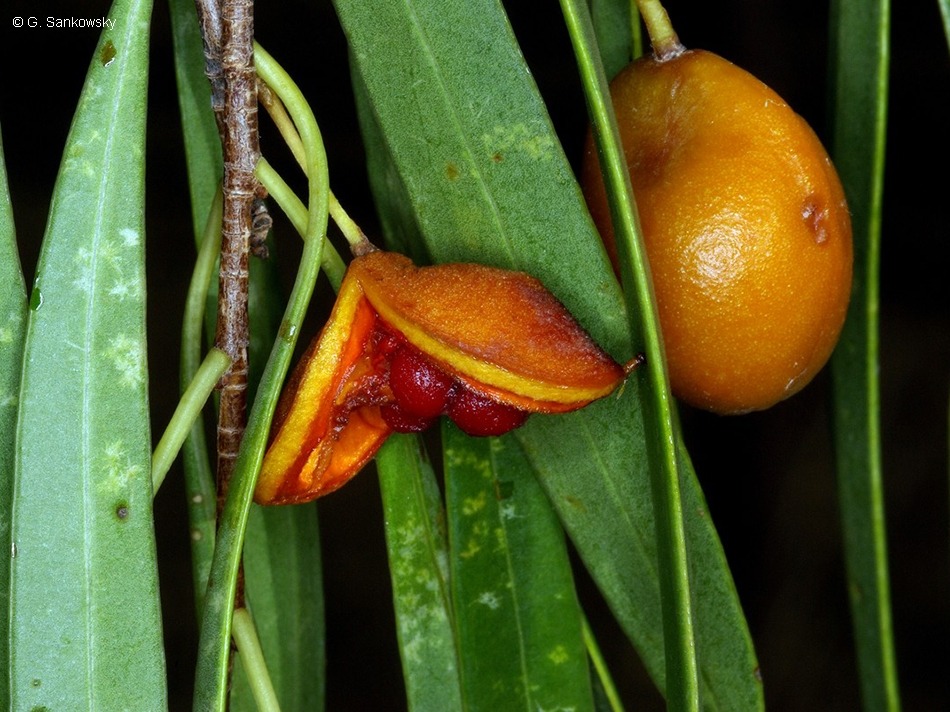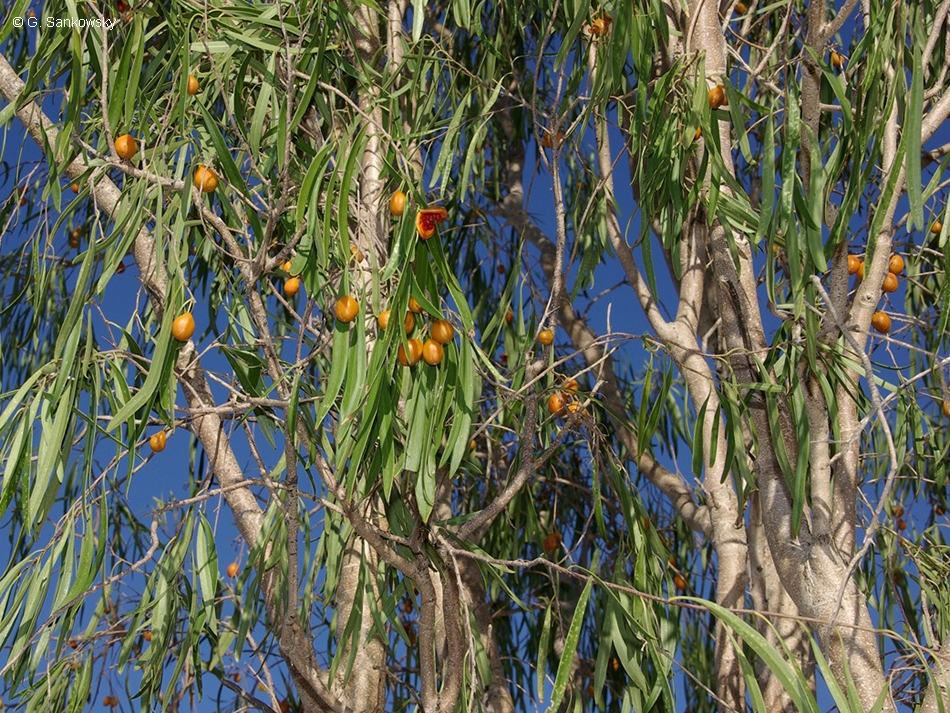Australian Tropical Rainforest Plants - Online edition
Pittosporum angustifolium Lodd.








Loddiges, C., Loddiges, G. & Loddiges, W. (1832), The Botanical Cabinet: t. 1859. Type: "This has lately been introduced from New South Wales"
Shrub or tree to 10 m high. Branchlets pendulous, stems hairless or with occasionally t-shaped hairs or uniseriate hairs. Bark grey, thick fissured and fibrous below, smooth in canopy. Buds covered by several scale leaves in axils.
Leaves simple, alternate. Stipules absent. Petiole 5-14 mm long. Leaf blades linear to very narrow-elliptic to very narrow oblanceolate, falcate, 4-12 cm long, 0.5-1.2 cm wide, base attenuate, margin entire, apex acuminate, acute or sometimes obtuse, with hooked mucro. Lateral veins 8-11 pairs. Both surfaces hairless.
Inflorescence appearing axillary (cited as terminal on short lateral shoots in Cayzer et al. 2000), solitary or in clusters. Flowers appearing bisexual but functionally unisexual and plants dioecious, 5-merous, fragrant. Pedicels up to 10 mm long. Sepals ovate, free or shortly connate at base, c. 2.5 mm long, becoming recurved at anthesis, green. Corolla tubular (usually for > half length) with lobes strongly reflexed or recurved, up to 10 mm long; petals free at base and cohering in upper half of tube, creamy yellow. Male flowers in clusters of c. 4, sometimes with more than one cluster in an axil; stamens 5, alternating with petals, at least partially exserted; pistil small, ovary rarely producing fertile ovules, stigma not lobed. Female flowers solitary or paired, staminodes 5 with very small anthers, not exserted; ovary superior, unilocular but may appear 2-3 locular with raised placental ridges creating incomplete partitions; stigma 2- or 3-lobed.
Features not available.
This profile information and associated coding has been adapted from Cayzer et al. (2000) and Harden et al. (2014).





